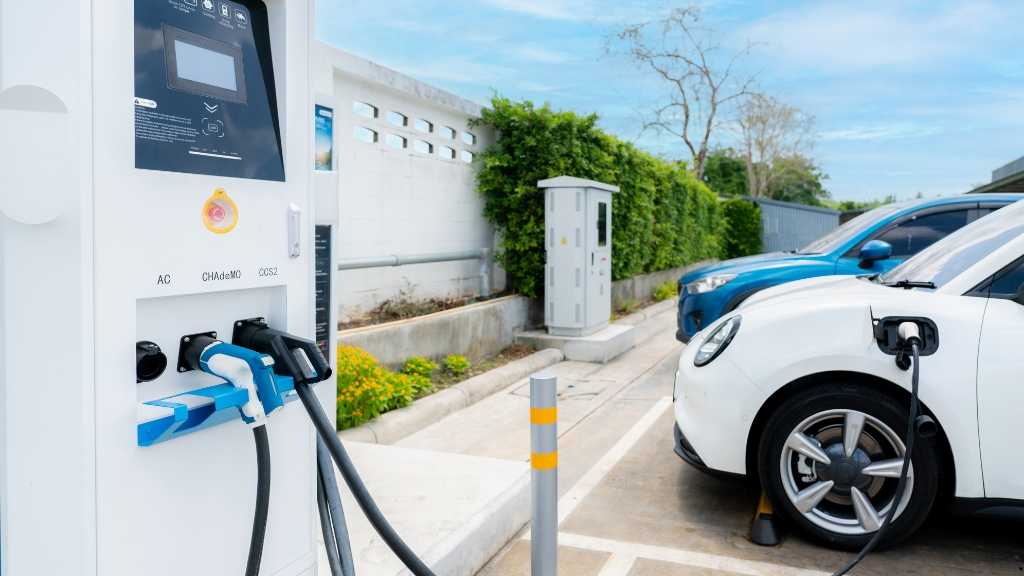Overview of EV Safety Developments
Innovative EV safety features are transforming the automotive landscape. Manufacturers have focused on integrating advanced technologies to protect drivers, passengers, and pedestrians. The push for safer roads has led to significant advancements.
Advanced Driver-Assistance Systems (ADAS) play a crucial role in enhancing EV safety. These systems use sensors, cameras, and radar to monitor surroundings and provide real-time assistance. ADAS features include adaptive cruise control, lane-keeping assistance, and automatic emergency braking. For example, Tesla’s Autopilot offers a comprehensive suite of driver-assistance tools designed to prevent accidents.
Battery safety remains a top concern for EV manufacturers. Robust battery management systems (BMS) ensure optimal performance and safety. BMS monitor battery temperature, voltage, and current in real-time. If irregularities are detected, the system takes corrective action. Companies like Nissan and BMW use advanced BMS to maintain battery integrity and prevent overheating.
Structural innovations in EV design contribute to overall safety. Manufacturers employ high-strength materials and strategic crumple zones to absorb impact energy. The low center of gravity in EVs, due to battery placement, enhances stability and reduces rollover risks. For instance, the Volvo XC40 Recharge has received high safety ratings for its design and crash protection features.
Connectivity features enhance driver awareness and vehicle communication. Many EVs incorporate Vehicle-to-Everything (V2X) technology, allowing vehicles to communicate with infrastructure, other vehicles, and pedestrians. This connectivity improves situational awareness and helps prevent accidents. Audi’s Traffic Light Information system is an example, where cars receive real-time traffic light data to optimize driving patterns and enhance safety.
Advanced Driver Assistance Systems (ADAS)
Advanced Driver Assistance Systems (ADAS) play a vital role in the safety of electric vehicles, combining various technologies to enhance driving precision and prevent accidents. These features not only improve safety but also pave the way for autonomous driving.
Adaptive Cruise Control
Adaptive Cruise Control (ACC) adjusts the vehicle’s speed to maintain a safe following distance from the car ahead. Using sensors and radar, ACC automatically reduces speed when traffic slows. For example, Tesla’s Autopilot employs ACC to seamlessly adapt to changing traffic conditions, enhancing driver convenience and safety.
Lane Keeping Assist
Lane Keeping Assist (LKA) helps drivers stay within their lane by providing steering inputs or warnings if the vehicle starts to drift. This system uses cameras to monitor lane markings. Consider Nissan’s ProPILOT Assist, which leverages LKA to reduce the risk of unintentional lane departures, particularly useful on highways.
Automated Emergency Braking
Automated Emergency Braking (AEB) can prevent or mitigate collisions by automatically applying the brakes when a potential crash is detected. This technology uses a combination of sensors, cameras, and radar. For instance, Volvo’s City Safety feature exemplifies AEB, activating the brakes to avoid collisions with other vehicles, pedestrians, or large animals.
Battery Safety Innovations
Innovative EV safety mechanisms ensure battery reliability and protect vehicle occupants. Leading advancements include thermal management systems and impact-resistant designs.
Thermal Management Systems
Thermal management systems regulate battery temperature to prevent overheating. These systems use liquid cooling, ensuring optimal performance even during rapid charging. For example, Tesla integrates advanced liquid cooling in its Model S and X batteries, maintaining efficiency under high loads. High-performance EVs employ active cooling to manage temperature variances, enhancing battery lifespan and safety. Additionally, thermal sensors within battery packs provide real-time data, allowing for preemptive adjustments.
Impact-Resistant Designs

- Impact-resistant designs feature reinforced battery enclosures to withstand collisions.
- Manufacturers like BMW and Volvo incorporate high-strength materials around battery packs, ensuring structural integrity.
- These designs reduce the risk of fires and leaks in accidents.
- The BMW i3 uses carbon-fiber-reinforced polymer (CFRP) for enhanced protection. Strategic placement of battery modules within the vehicle frame further mitigates damage from impacts.
- Multi-layered enclosures add extra barriers, minimizing potential hazards during crashes.
Enhanced Structural Integrity
Enhanced structural integrity plays a crucial role in increasing the safety of electric vehicles (EVs). Manufacturers integrate advanced materials and design principles to create safer, more resilient structures.
Crumple Zones
Crumple zones absorb impact energy during collisions, reducing injury risks for occupants. Engineers design crumple zones to manage crash forces by deforming strategically, directing energy away from the passenger cabin. For example, the Tesla Model S utilizes front and rear crumple zones that effectively absorb collision energy, safeguarding passengers. These zones typically employ high-strength steel and aluminum to optimize energy absorption during crashes.
Rigid Body Construction
Rigid body construction enhances the overall stability and durability of EVs. A rigid frame minimizes deformation during impacts, maintaining cabin integrity. Manufacturers use materials like:
- ultra-high-strength steel
- carbon fiber
to achieve a robust structure. The BMW i3, for instance, features a Life Module made of carbon-fiber-reinforced polymer, ensuring a lightweight yet incredibly strong body. This construction method not only protects occupants but also improves vehicle handling and performance, especially during high-speed maneuvers.
Cutting-Edge Sensor Technologies
EVs incorporate cutting-edge sensor technologies to enhance safety and autonomy. These sensors enable real-time data collection, fostering advanced driver-assistance systems.
Lidar and Radar Systems
Lidar and radar systems revolutionize how EVs perceive their surroundings. Using light detection and ranging, lidar creates precise 3D maps by emitting laser beams, detecting objects, and measuring distances. For instance, Tesla’s full self-driving (FSD) suite employs lidar for accurate object detection, even in adverse weather. Radar, on the other hand, uses radio waves to detect objects, providing information on speed, distance, and movement. Audi’s A8 uses radar to facilitate adaptive cruise control, ensuring safe following distances.
Camera-Based Detection
Camera-based detection augments lidar and radar by capturing visual information. These cameras detect lane markings, traffic signs, pedestrians, and other vehicles. High-definition cameras, like those in the Nissan Leaf, enhance object recognition and lane keeping assist. Additionally, Tesla’s Model 3 utilizes an array of cameras for 360-degree visibility, supporting features like automatic lane change and parking assistance.
Integrating these advanced sensor technologies, EVs offer unparalleled situational awareness and safety.
Cybersecurity Measures
Cybersecurity is a crucial aspect of EV safety, ensuring that vehicles remain secure from potential cyber threats and vulnerabilities.
Data Encryption
Data encryption plays a vital role in protecting sensitive information in EVs. Manufacturers implement robust encryption protocols to secure communication between the vehicle and external systems. For example, Tesla encrypts data transmitted between its vehicles and servers to prevent unauthorized access to vehicle diagnostics and personal user data. Encryption algorithms like Advanced Encryption Standard (AES) provide a high level of security, safeguarding critical information and ensuring data integrity throughout the vehicle’s lifecycle.
Over-the-Air Updates
Over-the-air (OTA) updates enhance EV cybersecurity by allowing manufacturers to address vulnerabilities in real-time. OTA updates enable remote software and firmware updates, ensuring vehicles stay current with the latest security protocols. For instance, Tesla’s OTA updates can fix bugs, enhance performance, and introduce new features without needing physical service visits. These updates mitigate risks associated with outdated software, protecting EVs from potential cyber-attacks and improving overall vehicle safety.




